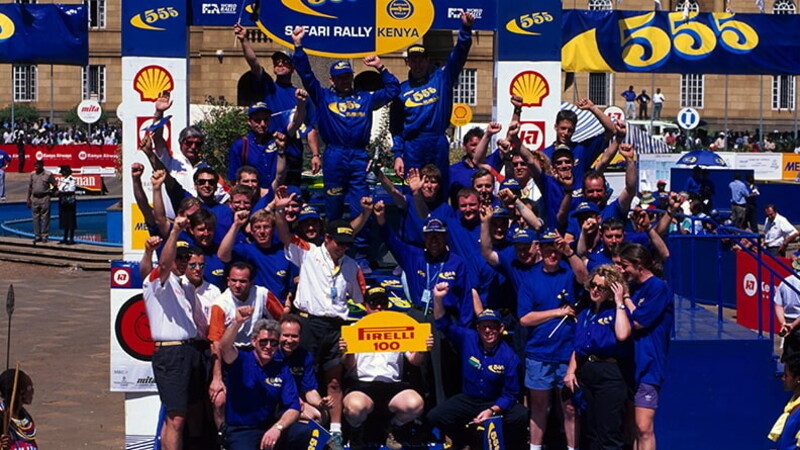When Colin McRae put Run Flat technology to the test

WHEN THE GOING GETS TOUGH, THE TOUGH GET GOING
Rallying, in a nutshell, is about some of the best drivers in the world tackling some of the most demanding roads on the planet – in cars that resemble those you can drive on the road.
Over the years, this has made rallying a brilliant testbed for tyre manufacturers to develop ideas for the road. Not only do rally tyres need to provide excellent grip on slippery surfaces like mud and ice, but they also have to stand up to rough and rocky surfaces.
In rallying, a puncture can cost a driver up to two minutes on the leader board while they're fighting over a matter of seconds with another driver. But the forces involved when a rally car is driven flat-out along an abrasive gravel stage can mean that punctures are an inevitability with even the most resistant of rubber.
To solve this, tyre manufacturers used rallying to develop run-flat technologies which allow a car to still be driven at normal speed even after a tyre has been punctured. In the case of Pirelli, the Italian company developed its EMI anti-deflation system in the 1990s. This consisted of a mousse-like material that expanded to replace the air that would escape the tyre in the event of a puncture. These days, Pirelli's Seal Inside technology for the road is very similar, thanks to a special foam that plugs the gap whenever a tyre is punctured – allowing drivers to continue their journeys.

IF IN DOUBT, FLAT-OUT
Such technology played a key role in the World Rally Championship titles won by Colin McRae, Richard Burns and Petter Solberg, with Pirelli tyres fitted to their Subaru Imprezas. Along the way they won some of most gruelling gravel rallies in the WRC, such as the Acropolis Rally in Greece and Safari Rally in Kenya.
In fact, the legendary Safari Rally – which McRae twice won with Pirelli tyres during his career – was somewhere where the EMI was not always used, in order to save weight. Instead, it was preferred to use a special construction with a very high resistance to the kind of impacts with rough ground and rocks found in the Kenyan bush. And that's exactly the principle behind Pirelli's road-going Run Flat tyres, used by a wide variety of manufacturers recently: in particular BMW.
But it was quite a different type of car that made these tyres famous – and very different roads to everyday motorways. In 2000, Subaru drivers Burns and Juha Kankkunen finished one-two on the Safari Rally without a single puncture to their Pirelli tyres in over 1000 kilometres of high-speed action. McRae meanwhile became particularly successful on events such as Kenya, Greece and Cyprus, with Pirelli's run-flat solution allowing him to live up to his reputation for pushing a car to its very limits. McRae's motto was “if in doubt, flat-out”: making him the ideal person to put any tyre through its ultimate paces.

FROM THE STAGES TO THE ROAD
Run-flat technology was outlawed from the WRC in 2008 in a bid to save costs, but the lessons learned up to that point made their way into road car tyres. The application is somewhat different but the concept is the same: While a run-flat rally tyre allowed a driver to finish the special stage with a competitive time, a run-flat tyre for the road allows the driver to safely complete their journey without being stranded at the side of the road.
Meanwhile, the disappearance of run-flat technology from rallying has shifted the focus back onto developing tyres that are as resistant to punctures as possible. Pirelli already led the way when it was the sole supplier for a new era of WRC tyres from 2008 to 2010, and will continue that work as it returns to the championship in 2021. On some of the most demanding roads in the world.




